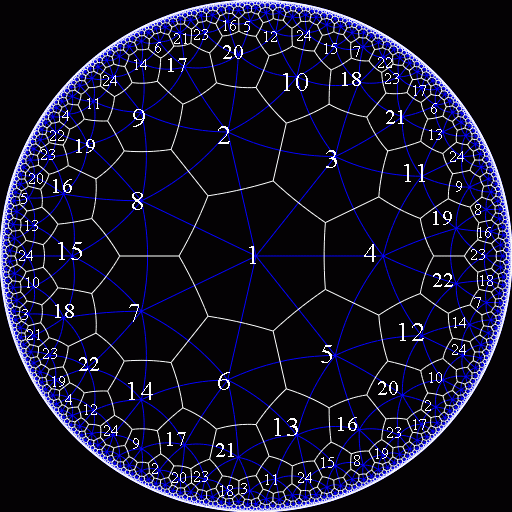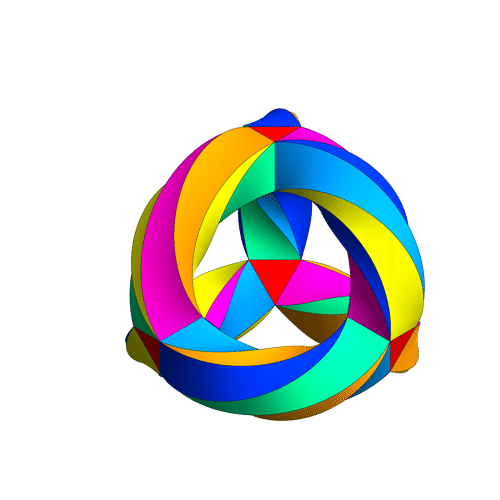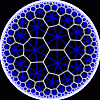This Week’s Finds in Mathematical Physics (Week 274)
Posted by John Baez
In week274 of This Week’s Finds, see a gorgeous view of a Martian crater. Learn about infinite-dimensional 2-vector spaces, and representations of ‘2-groups’ on these. Get a hint of how representations of the Poincaré 2-group arise from pictures like this:
And learn about Mackey’s classic work on unitary group representations!
The picture above, drawn by Don Hatch, is one of many beautiful tesselations of the hyperbolic plane. It’s called {7,3} since it’s built from regular heptagons, 3 meeting at each corner. If we mod out by a certain symmetry group, the heptagons get identified as shown here…

… and we’re left with a tiling of a 3-holed torus by 24 regular heptagons — or dually, by 56 equilateral triangles, like this:

This puts a maximally symmetrical conformal structure on the 3-holed torus. The result is called Klein’s quartic curve.
There are lots of nice relations between such quotients of hyperbolic space by discrete symmetry groups and the theory of modular forms.
So: can anyone develop deeper links between representations of the Poincaré 2-group and modular forms?
The relation between measurable fields of Hilbert spaces and coherent sheaves of vector spaces may hold a clue…


Re: This Week’s Finds in Mathematical Physics (Week 274)
Random walks on groups play an important role in the theory of rapidly mixing Markov chains. Do you think there any chance of defining a (useful) version this concept for 2-groups ?